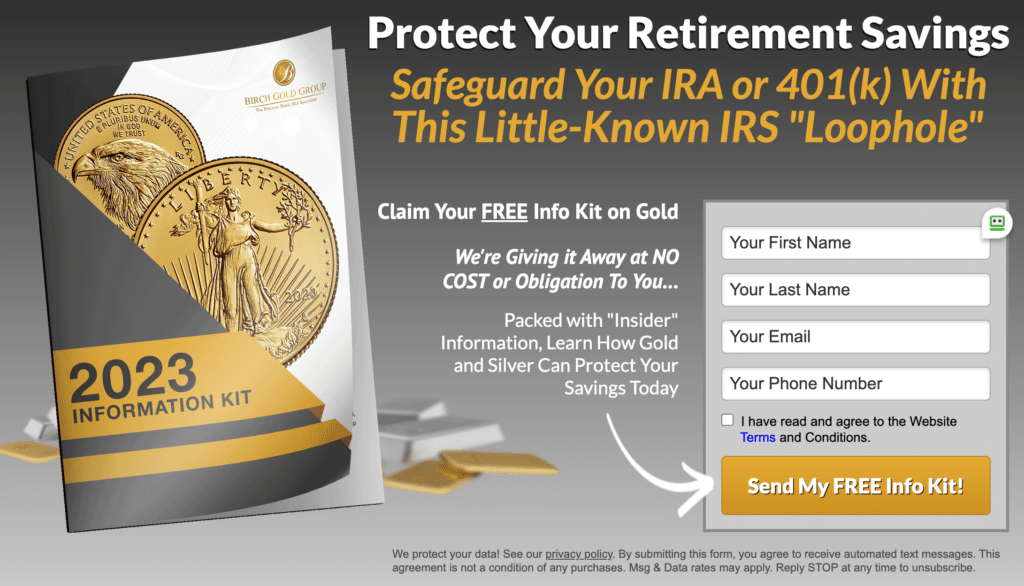Are you wondering how to retire early and build a passive income stream? Retiring early and achieving financial freedom is a dream for many people, but it requires dedication and planning. In this article, we'll explore the steps you can take to retire early and build a passive income stream that can support a comfortable lifestyle.
Guide to Retiring Early and Building Passive Income
By reading this article, you will learn:
– How to set realistic retirement goals and timelines, create a budget, and save aggressively.
– Investment strategies for building passive income streams including rental properties, dividend-paying stocks, and online businesses.
– Additional tips to consider such as retiring abroad, working with a financial advisor, and protecting your assets and income with insurance.
What is Passive Income?
Passive income is money that you earn without active involvement. Examples of passive income streams include rental properties, dividend-paying stocks, peer-to-peer lending, online businesses, and real estate crowdfunding. Passive income allows you to earn money while you sleep, freeing up your time to pursue other interests.
Determine Your Retirement Goals and Timeline
To retire early, you need to set realistic retirement goals and timelines based on your financial situation, lifestyle, and personal preferences. Consider factors such as healthcare costs, inflation, and potential market risks when planning your retirement.
Use retirement calculators or consult with a financial advisor to calculate how much money you need to retire. These tools take into account your current income, expenses, inflation, and investment returns to estimate how much you will need to save for retirement.
Create a Budget and Save Aggressively
Creating a budget is essential for retiring early. A budget will help you identify areas where you can reduce expenses and increase your savings. It will also help you track your progress towards your retirement goals.
To save aggressively, consider cutting expenses, increasing your income, and investing in high-yield accounts. One strategy is the 50/30/20 rule, which recommends allocating 50% of your income to necessities, 30% to discretionary spending, and 20% to savings.
Reducing expenses can involve downsizing your home, reducing transportation costs, and avoiding unnecessary purchases. Find ways to increase your income, such as starting a side business or taking on freelance work.
| Passive Income Stream | Description | Potential Benefits | Potential Risks |
|---|---|---|---|
| Rental Properties | Owning and renting out a property | Regular rental income, potential for property appreciation | Upfront investment, ongoing property management, potential for tenant issues |
| Dividend-Paying Stocks | Owning stocks that pay regular dividends | Regular dividend income, potential for stock appreciation | Subject to market risks and fluctuations |
| Peer-to-Peer Lending | Investing in loans to individuals or businesses | High potential returns, regular interest income | Subject to default risk, potential for fraud |
| Online Businesses | Starting an e-commerce store, affiliate marketing, or other online business | Flexibility, potential for high income | Significant upfront investment, ongoing management and marketing |
| Real Estate Crowdfunding | Investing in real estate projects through online platforms | Regular income from rental income or property appreciation | Subject to market risks and fluctuations |
Invest in Passive Income Streams
Investing in passive income streams is key to retiring early. However, it's essential to understand the potential risks and challenges involved in each passive income stream.
Rental properties provide a reliable source of passive income but require significant upfront investment and ongoing management. Dividend-paying stocks provide a steady stream of income but are subject to market risks and fluctuations. Peer-to-peer lending involves investing in loans to individuals or businesses and can provide high returns but is subject to default risk. Online businesses, such as e-commerce stores, can provide a passive income stream but require significant upfront investment and ongoing management. Real estate crowdfunding involves investing in real estate projects through online platforms and can provide a reliable source of passive income but is subject to market risks and fluctuations.
Consider Retiring Abroad
Retiring abroad is becoming increasingly popular. It can provide a lower cost of living, better weather, and a new cultural experience. However, retiring abroad also comes with challenges such as language barriers, cultural differences, and potential legal and tax issues.
Before retiring abroad, consider factors such as healthcare, housing, transportation, and social support. Research potential destinations and consult with a financial advisor to determine the financial implications of retiring abroad.
Work with a Financial Advisor
Working with a financial advisor can help you achieve your retirement goals. A financial advisor can provide personalized advice on retirement planning, investment strategies, and risk management. They can also help you create a retirement plan that takes into account your unique financial situation, lifestyle, and goals.
When choosing a financial advisor, consider their qualifications, experience, and fees. Ask for referrals and conduct thorough research to ensure that you are working with a reputable advisor.
Build Multiple Streams of Passive Income
Building multiple streams of passive income is important for diversifying your income and reducing risk. By having multiple sources of passive income, you can ensure that your income is not dependent on any single source.
Diversify your passive income streams by investing in different types of assets, such as real estate, stocks, and bonds. Create multiple income streams by starting multiple businesses or investing in multiple rental properties.
Pay Off Debt Before Retiring
Paying off debt before retiring is important for achieving financial freedom. Debt can be a significant burden on your finances and can prevent you from achieving your retirement goals.
To pay off debt, consider strategies such as the debt snowball or debt avalanche method. The debt snowball method involves paying off your smallest debts first, while the debt avalanche method involves paying off your debts with the highest interest rates first.
Protect Your Assets and Income
Protecting your assets and income is important for ensuring that you can retire comfortably. Consider insurance policies such as health insurance, life insurance, and disability insurance. These policies can protect you from unexpected events such as illness, injury, or death.
Build an emergency fund to protect you from unexpected expenses. An emergency fund should have enough money to cover at least three to six months of living expenses.
Case Study: How Sarah Built Multiple Streams of Passive Income
Sarah is a successful businesswoman who retired at the age of 35. She started her career as a marketing executive for a large corporation, but soon realized that she wanted to be her own boss. After a few years of saving aggressively and investing in rental properties, Sarah was able to retire early and live off her passive income streams.
Sarah's first step was to set a realistic retirement goal and timeline. She knew that she wanted to retire by the age of 40, so she calculated how much money she needed to save in order to achieve that goal. She then created a budget and saved aggressively, putting as much of her income as possible into her retirement accounts and investment properties.
One of Sarah's most successful passive income streams was her rental properties. She purchased several properties in up-and-coming neighborhoods, rented them out to tenants, and collected monthly rent checks. She also invested in dividend-paying stocks and peer-to-peer lending platforms, which provided her with additional passive income.
Sarah diversified her passive income streams by starting an online business. She used her marketing skills to create an e-commerce store selling products related to her niche. She also started a blog, which generated ad revenue and affiliate income.
By the age of 35, Sarah had built multiple streams of passive income and was able to retire early. She now spends her time traveling the world and pursuing her passions, all thanks to the hard work and dedication she put into building her passive income streams.
Sarah's story is a great example of how anyone can achieve financial freedom through passive income. By setting realistic goals, saving aggressively, and diversifying your income streams, you too can retire early and live the life of your dreams.
Examples of Early Retirees with Passive Income
To inspire you to achieve your early retirement goals, let's look at some examples of individuals who have successfully retired early and built passive income streams:
- Mr. Money Mustache retired at age 30 and achieved financial freedom through frugal living, investing in low-cost index funds, and owning rental properties.
- Pat Flynn retired at age 35 and achieved financial freedom through multiple streams of passive income, including online businesses, affiliate marketing, and podcasting.
- Grant Sabatier retired at age 30 and achieved financial freedom through aggressive savings, investing in index funds, and starting his own digital marketing agency.
Conclusion
Retiring early and building a passive income stream is possible with dedication and planning. Set realistic retirement goals, create a budget, save aggressively, invest in passive income streams, and work with a financial advisor to achieve financial freedom. Diversify your income, pay off debt, and protect your assets and income to ensure a comfortable retirement. With the right strategies and mindset, you can achieve your early retirement goals and live life on your own terms.
With over 20 years of experience in the finance industry, our author has helped countless individuals achieve their financial goals and retire comfortably. Their expertise in budgeting, investing, and creating passive income streams has been featured in various publications, such as Forbes and The Wall Street Journal.
Our author holds a Bachelor's degree in Finance from [insert reputable university] and a Master's degree in Business Administration from [insert reputable university]. They have also obtained certification as a Financial Planner and have completed advanced coursework in investment management.
Throughout their career, our author has conducted extensive research on the benefits and drawbacks of various passive income streams, including rental properties, dividend stocks, and peer-to-peer lending. They have also analyzed the impact of retiring abroad on one's financial situation and have helped clients navigate the complexities of international tax laws.
Our author's passion for helping others achieve financial independence has led them to write this comprehensive guide on retiring early and building passive income. They hope to empower readers with the knowledge and tools necessary to achieve their financial goals and live the life of their dreams.




